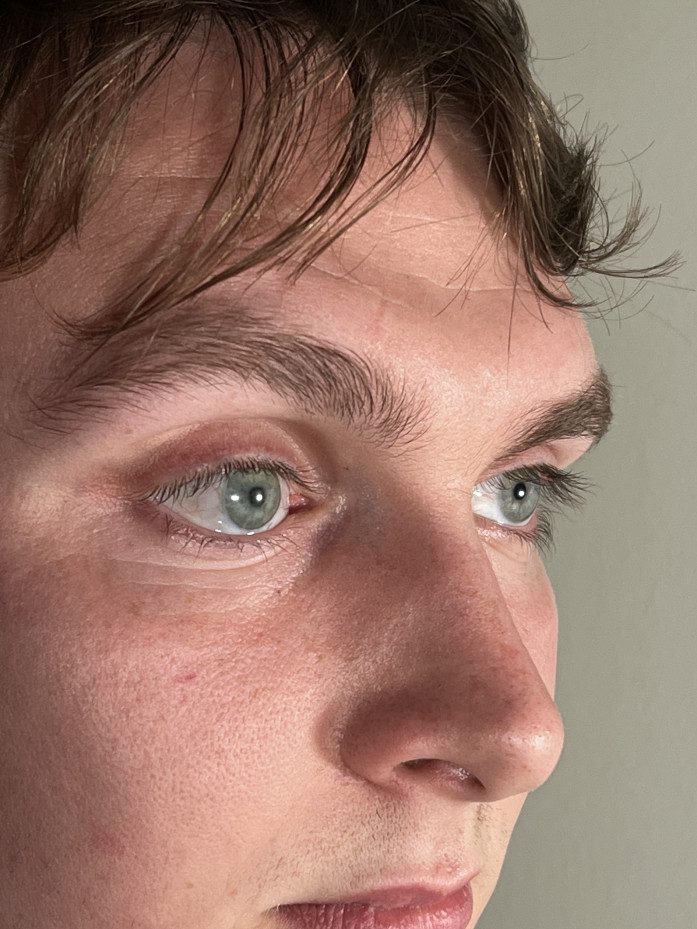par Fraunhofer Institute For Computer Graphics Research IGD
Breakthrough: Patients and Ocularists Impressed by Quality of Computer-Generated 3D-Printed Eye Prostheses
Fraunhofer IGD technology now in use at Moorfields Eye Hospital
DARMSTADT, GERMANY / ACCESSWIRE / February 27, 2024 / Hundreds of thousands of people in Europe have been given new hope with the arrival of ocular prostheses that can be manufactured in reproducibly high quality and less manual work using the 3D printing process. Fraunhofer IGD is supporting ocularists in this endeavor with the provision of the requisite software and printer driver. More than 200 patients are already benefiting from the new technology. The researchers have now published their methodology and results to date in a paper that has appeared in the peer-reviewed journal Nature Communications and is now available to all interested parties.

The artificial right eye, shown on the left. The eye prostheses produced with the aid of Fraunhofer IGD's 3D printing technologies match the appearance of the healthy eye and fit into the eye socket. (Source: Stephen Bell, Ocupeye Ltd)
The research team at the Fraunhofer Institute for Computer Graphics Research IGD first made public its technology in 2021. Since then, 3D printing has revolutionized the production of ocular prostheses at the renowned Moorfields Eye Hospital in London. "Optimally adapted artificial eyes can enormously enhance the quality of life of those affected," explains Johann Reinhard, Deputy Department Head of the 3D Printing Technology Competence Center. The data-driven design and 3D printing process developed by the Fraunhofer team ensures that the prosthesis is not only a perfect match for the patients's remaining good eye, but is also a perfect fit for the empty eye socket. Fraunhofer IGD's Cuttlefish:Eye software and Cuttlefish® printer driver enable the ocularists to use this technology. The software is already approved as a medical device in the UK and will be making its debut in mainland Europe in the near future.
Ocular prostheses impress patients and ocularists alike
The academic paper describes the technology behind the Cuttlefish:Eye software and the quality of the ocular prostheses created with it. To this end, the researchers examined both the appearance and the shape of the ocular prostheses in a sample of ten patients. The appearance criterion included the size and color of the iris and pupil as well as the texturing of the sclera. The ocularist treating the patients rated these points as excellent. "Patients describe the 3D-printed ocular prostheses as ‘life-changing'," adds Reinhard. In terms of the shape criterion, the analysis of the ten cases helped to clarify the types of patients for whom the ocular prostheses are more suitable and the types for whom they are less so. The necessary adjustments as well as the final direction of gaze and mobility of the prosthesis were considered.
The automated nature of 3D printing brings the dual advantage of consistently high quality and shorter production times. As the input from ocularists is reduced, this leads to significant reduction in manual labor; depending on the quantity, this reduction can be as much as a factor of five. "More importantly, however, more patients can be treated and their waiting time for a new prosthesis can be shortened," adds Reinhard. Eye prostheses usually become necessary after serious injuries or illness; in Europe, around 750,000 people are affected.
Gentle procedure
The digital measuring and production process is also particularly painless for patients. Optical coherence tomography (OCT) is used to create a scan of both the eye socket and the healthy eye, while an integrated camera provides a color-calibrated image. The traditional alginate impression of the eye socket is no longer necessary. Cuttlefish:Eye uses a statistical shape model to predict the best-fitting prosthesis shape and is able to do this despite incomplete information on the surface of the eye socket. In just a few minutes, the OCT data is used to calculate an accurately fitting 3D model of the eye prosthesis which is a close visual match to the healthy eye. Production takes place on a multi-material 3D printer, which is controlled by means of the Cuttlefish® 3D printer driver. The prostheses are manufactured and distributed by Ocupeye Ltd.
The researchers are now also transferring their expertise in the field of 3D printing in color and their experience with Cuttlefish:Eye to other areas. In future, dental restorations and facial prostheses will also be designed using a software and produced with the Cuttlefish® printer driver.
Further information:
- More about ophthalmology research: https://www.igd.fraunhofer.de/en/industries/healthcare/ophtalmology.html
- Paper can be read at: https://www.nature.com/articles/s41467-024-45345-5
About Fraunhofer IGD:
The Fraunhofer Institute for Computer Graphics Research IGD has been setting standards in visual computing - image- and model-based informatics - for more than 30 years. Its roughly 210-strong staff support companies and institutions across the automotive industry, healthcare, bioeconomics and infrastructure, information technology, maritime economy, and cultural and creative economy sectors. Fraunhofer IGD provides specific technological solutions and support for strategic development. Its researchers carry out data analyses, design hardware and software, develop protypes, and implement interactive visual systems. The focuses are human-machine interactions, virtual and augmented reality, artificial intelligence, interactive simulation, modeling, and 3D printing and scanning. Fraunhofer IGD has been engaged in high-level research since 1987, supporting change in society and the economy with application-oriented solutions developed at its facilities in Darmstadt, Rostock, and Kiel. Its products acquire international relevance via ongoing collaboration with its Austrian sister institute, which operates facilities in Graz and Klagenfurt, and participation in a wide range of EU projects.
Media Contact:
Daniela Welling | Head of Corporate Communications
Fraunhofer Institute for Computer Graphics Research IGD
Fraunhoferstraße 5 | 64283 Darmstadt - Germany
Phone: +49 6151 155-146 | presse@igd.fraunhofer.de | https://www.igd.fraunhofer.de
Contact Information
Wilhem Fuchs
Public Relations
kontakt@jetzt-pr.de
+49211748595161
SOURCE: Fraunhofer Institute for Computer Graphics Research IGD
View the original press release on newswire.com.

